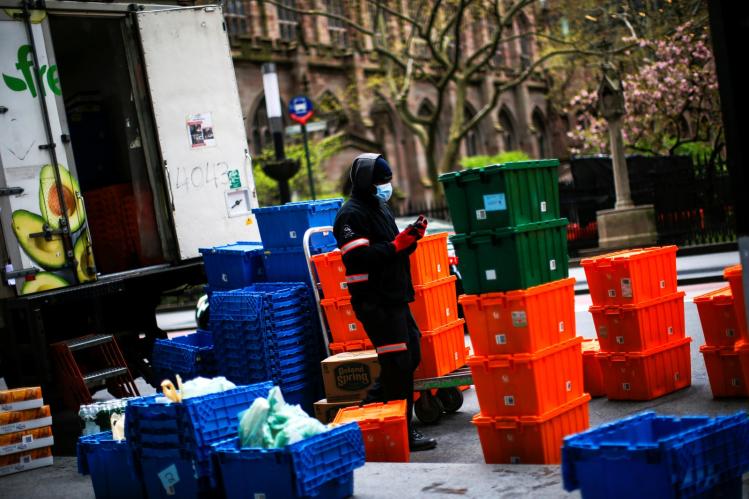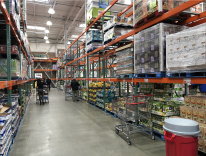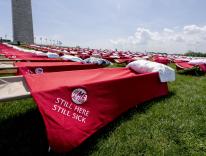
How will we eat? It’s a question all Americans started asking, with varying degrees of urgency, as the pandemic shuttered restaurants and schools, and turned grocery stores into sites of contagion. In mid-March, as shutdowns began, shoppers able to afford bulk purchases (and willing to ignore official guidelines) hoarded not only toilet paper and disinfectant wipes, but also beans, grains, and meats, stripping shelves and straining supply chains to fill their pantries and freezers. “Quarantine baking” made flour and yeast difficult to come by. Egg prices shot up. Hatcheries sold more backyard chickens; vegetable seed sales spiked.
By now, many grocery chains have curtailed panic buying by limiting how much of a product any shopper can purchase at one time. But concerns about food supplies persist. Distributors struggle to reroute food originally intended for restaurants, hotels, universities, cruise lines, and other now-closed industrial kitchens to grocery stores and food banks. The FDA has temporarily loosened nutrition-labeling requirements to try to speed this along. But it’s still an expensive process for farmers who’ve lost big customers. With the agricultural sector unable to adapt quickly enough, perishable surpluses are being destroyed—rotting vegetables plowed into the soil, millions of gallons of milk dumped. It’s a terrible waste at a time when so many Americans are struggling to afford food.
Then there’s the spike in coronavirus cases among workers in food-processing plants and warehouses. In mid-April, South Dakota’s Smithfield pork plant closed closed after more than 230 of its employees tested positive for the coronavirus. (Smithfield accounts for about 5 percent of the nation’s pork production.) Other meat suppliers from Iowa to Pennsylvania are shutting plants amid similar outbreaks.
Next to doctors and nurses, the most essential of essential workers—and the most at risk—are those who maintain our food supply: warehouse workers, grocery-store clerks, food-delivery people, fast-food employees, and Instacart shoppers (the grocery-ordering service’s business is up 120 percent). Protective measures have been taken at some companies, including store-capacity limits, reduced hours, plastic partitions, spaced check-out lines, temperature taking, and gloves and masks for employees.
But in too many cases, the corporations that employ these workers have put them in preventable danger, with protective measures enforced inconsistently or too late. Employees complain of shifts without protective equipment, murky or punitive sick-leave policies, no health insurance, limited information about who in their workplace has been sick, and low pay—even as their employers call them “heroes.” Workers have resorted to strikes and “sick-outs.” At Instacart, workers demanded hazard pay, better sick leave, higher default tips, and disinfectant wipes. The company promised to distribute hygiene kits, but many employees still don’t have them.
No surprise, then, that it’s increasingly difficult to find people willing to work these dangerous jobs. But the need is greater than ever: as workers call in sick or quit, job postings for grocery clerks have jumped 60 percent. So far, at least forty-one grocery workers have died; thousands have tested positive.
Over five weeks, 26.4 million Americans have filed for unemployment, including many who worked in food service: in restaurants, bars, or corporate cafeterias. Food banks have seen an exponential increase in first-time customers. The banks are stretched to their limits, spending millions more than budgeted as the price of non-perishable staples like peanut butter and rice skyrockets. Public-school cafeterias, kept open to serve meals to low-income students, are now also providing food for adults.
Panic aside, most of us will be fine; suppliers insist that while we may see less variety in the grocery stores, there will still be plenty to eat. If you’re going to worry about the food supply, worry about front-line workers, that they’ll get the protection and compensation they deserve. Or worry about those who can no longer afford to buy their own groceries. And if you can afford to, maybe do more than worry: consider putting some of that government-stimulus check toward peanut butter and rice for someone else.
Please email comments to [email protected] and join the conversation on our Facebook page.
Previous Story
Up for Grabs
Next Story
Distance, Not Desertion

